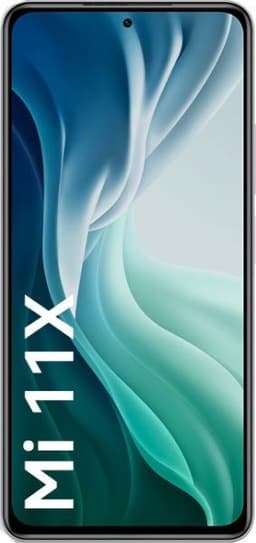- Archive
- Xiaomi Mi 11X vs Xiaomi Redmi Note 14
Xiaomi Mi 11XvsXiaomi Redmi Note 14
We compare these two popular phones to help you decide which one fits your needs and budget better.

Quick Stats

Quick Stats
Note: Highlighted specifications show differences between the two devices.
| Metric | Xiaomi Mi 11X | Xiaomi Redmi Note 14 |
|---|---|---|
| Connectivity | #286 Winner | #448 |
| Design | #494 Winner | #506 |
| Display | #207 Winner | #398 |
| Performance | #258 Winner | #467 |
| Battery | #518 | #394 Winner |
| Camera | #230 | #197 Winner |
Note: Lower rank number indicates a better position in category.
No significant specification differences found between these devices.
Xiaomi Mi 11X
Strengths
Weaknesses
Xiaomi Redmi Note 14
Strengths
Weaknesses
No specific cons listed for this device
Xiaomi Mi 11X
The Xiaomi Mi 11X is a strong contender in the upper mid-range smartphone market in India. Priced starting at ₹29,999, this phone offers impressive performance, thanks to its Qualcomm Snapdragon 870 processor, which is currently the second most powerful processor in the Snapdragon lineup. The phone comes with two variants: one with 6GB of RAM and 128GB of storage, and another with 8GB of RAM and the same amount of space. Xiaomi's use of UFS 3.1 storage and LP DDR5 ram ensures smooth performance for average everyday tasks as well as immersive gaming sessions. The Mi 11X handled major titles such as COD Mobile and Asphalt 9 Legends with ease, and audio output was a pleasant surprise even at high volumes. The phone's score on Antutu 9 was marginally higher than the OnePlus 9R, indicating its capabilities. While the design is subtle, it has eye-catching elements that make it compelling, with a glossy finish at the back adding to the premium look. However, this also invites smudges. The phone is dust and water-resistant up to IP53 standards and features Corning Gorilla Glass 5 on both front and rear. The camera module on the rear is noticeable but not especially attention-grabbing. The primary camera takes good photos in daylight, while portrait mode performs well too. However, photo quality lacks dynamism and vibrance, and nighttime images can be murky with noise. Overall, the Mi 11X is a feature-rich phone that offers impressive performance, a great screen, decent cameras, and several premium touches. While it may not be an all-rounder, it's a strong contender in its price segment, making it a good choice for those who prioritize performance above other features.
Xiaomi Redmi Note 14
The Xiaomi Redmi Note 14 Pro Plus is the top model in this year's series, boasting some notable upgrades over its counterparts. However, whether these improvements justify its higher price remains to be seen. With a powerful chipset, fast charging, and advanced camera capabilities, this device seems promising. But how does it stack up against other smartphones in its class? Our review aims to explore the pros and cons of the Redmi Note 14 Pro Plus, helping you decide if it's worth considering. Let's dive into our detailed analysis.
Need help choosing?
Read our detailed reviews to understand which device is better for your specific needs and budget.
Compare other phones
Explore comparisons between any other phones
Choose two different items to see a detailed comparison of their specifications, performance, and features